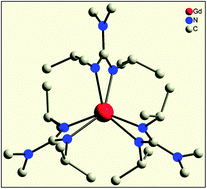Today the rare-earth elements play a critical role in numerous high-tech applications. This is why various areas of rare-earth chemistry are currently thriving. In organolanthanide chemistry the search for new ligand sets which are able to satisfy the coordination requirements of the large lanthanide cations continues to be a hot topic. Among the most successful approaches in this field is the use of amidinate and guanidinate ligands of the general types [RC(NR′)2]− (R = H, alkyl, aryl; R′ = alkyl, cycloalkyl, aryl, SiMe3) and [R2NC(NR′)2]− (R = alkyl, SiMe3; R′ = alkyl, cycloalkyl, aryl, SiMe3), which can both be regarded as steric cyclopentadienyl equivalents. Mono-, di- and trisubstituted lanthanide amidinate and guanidinate complexes are all readily available. Various rare earth amidinates and guanidinates have turned out to be very efficient homogeneous catalysts e.g. for the polymerization of olefins and dienes, the ring-opening polymerization of cyclic esters or the guanylation of amines. Moreover, certain alkyl-substituted lanthanide tris(amidinates) and tris(guanidinates) were found to be highly volatile and are thus promising precursors for ALD (= atomic layer deposition) and MOCVD (= metal–organic chemical vapor deposition) processes in materials science, e.g. for the production of lanthanide nitride thin layers. This tutorial review covers the continuing success story of lanthanide amidinates and guanidinates which have undergone an astonishing transition from mere laboratory curiosities to efficient homogeneous catalysts as well as ALD and MOCVD precursors within the past 10 years.

You have access to this article
 Please wait while we load your content...
Something went wrong. Try again?
Please wait while we load your content...
Something went wrong. Try again?


 Please wait while we load your content...
Please wait while we load your content...